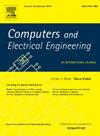径向网络中充电站和车辆同时并网运行的综合分配算法
IF 4.9
3区 计算机科学
Q1 COMPUTER SCIENCE, HARDWARE & ARCHITECTURE
引用次数: 0
摘要
电动汽车(EV)的广泛采用有助于通过最大限度地减少污染物和促进可持续交通实践来改善空气质量。大量电动汽车的整合导致充电站安装量的增加。这些负载的无计划分配会对配电系统产生影响,例如增加功率损耗。本文介绍了一种算法,提出了配电系统中充电站(CS)的最优分配策略。分配过程旨在最大限度地减少总的表观能量损失,并确保系统电压曲线保持在限制范围内。充电站的负载状况、充电和放电状况均在考虑之列。电动汽车并网(V2G)模式是将电动汽车并入电网的优点之一,因此利用这一特点来保持系统电压稳定并最大限度地减少能量损失。为保证电能质量指标,对 V2G 模式的额定功率和位置进行了优化确定。我们开发了一种遗传算法(GA)和自适应多人口精英 JAYA(SAMPE-JAYA)的混合算法,用于在系统中同时分配 CS 和 V2G。提出的算法在标准系统、IEEE 33 和 69 总线系统上进行了验证。提出的算法在标准 IEEE 33 总线和 69 总线系统上进行了验证。将 V2G 与 CS 集成后,两个系统的能量损失分别减少了 6.33% 和 22.25%,电压偏差分别改善了 7.61% 和 7.88%。本文章由计算机程序翻译,如有差异,请以英文原文为准。
A comprehensive simultaneous allocation algorithm of charging stations and vehicle to grid operation in radial networks
The widespread adoption of electric vehicles (EVs) helps improve air quality by minimizing pollutants and promoting sustainable transportation practices. The integration of a substantial fleet of EVs leads to an increase in the installation of charging stations. The unplanned allocation of these loads impacts the distribution systems, such as increasing power loss. This paper introduces an algorithm that proposes an optimal allocation strategy for charging stations (CSs) in a distribution system. The allocation process aims to minimize the total apparent energy losses and ensure that the system voltage profile remains within limits. Load profile, charging and discharging profiles of CSs are considered. Vehicle-to-Grid (V2G) mode is one of the merits of integrating EVs in the grid, so this feature has been used to maintain system voltage stability and minimize energy loss. Power rating and locations of V2G mode are optimally determined to guarantee power quality indices. A hybrid algorithm of genetic algorithm (GA) and Self-Adaptive Multi-Population Elitist JAYA (SAMPE-JAYA) is developed to simultaneously allocate CSs and V2G in the systems. The proposed algorithm is verified on standard systems, IEEE 33, and 69-bus systems. The proposed algorithm is verified on standard IEEE 33-bus and 69-bus systems. V2G integration with CSs results in a reduction of energy losses by 6.33% and 22.25%, respectively, and voltage deviation improvements to 7.61% and 7.88% for the two systems.
求助全文
通过发布文献求助,成功后即可免费获取论文全文。
去求助
来源期刊

Computers & Electrical Engineering
工程技术-工程:电子与电气
CiteScore
9.20
自引率
7.00%
发文量
661
审稿时长
47 days
期刊介绍:
The impact of computers has nowhere been more revolutionary than in electrical engineering. The design, analysis, and operation of electrical and electronic systems are now dominated by computers, a transformation that has been motivated by the natural ease of interface between computers and electrical systems, and the promise of spectacular improvements in speed and efficiency.
Published since 1973, Computers & Electrical Engineering provides rapid publication of topical research into the integration of computer technology and computational techniques with electrical and electronic systems. The journal publishes papers featuring novel implementations of computers and computational techniques in areas like signal and image processing, high-performance computing, parallel processing, and communications. Special attention will be paid to papers describing innovative architectures, algorithms, and software tools.
 求助内容:
求助内容: 应助结果提醒方式:
应助结果提醒方式:


